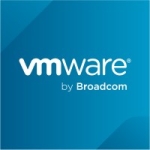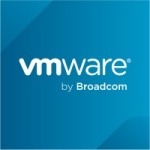What is our primary use case?
Our business needed a disaster recovery solution. We wanted something that could failover into Azure if our on-prem data center crashed or we lost power. We used to have bad power issues and needed a solution to failover into another data center to get everything running in under an hour.
We need to figure out which VMs and applications to stand up first in Azure to get our business operational the fastest. That's what we hope to achieve with Nutanix Cloud Clusters. We need to have our failover scenario prepared with our existing infrastructure and Azure.
Our existing infrastructure is a hybrid setup. We use private direct peering from our data center in Providence, Rhode Island, and we have a 12-gig express route with hub-and-spoke technology. We deployed NC2 on a spoke, and our hub is set up as a peer to that spoke.
How has it helped my organization?
We have been looking for a good DR solution for about two years, and Nutanix Cloud Clusters has been awesome so far. We wanted a reliable platform that could shift our workload. We have a very low-latency connection. NC2 is excellent for disaster recovery versus Azure Site Recovery, Microsoft's DR solution.
We spent a year on this ASR project and had so many issues when we attempted to do a failover. It took four to 24 hours to failover a couple of SQL VMs. During our first test deployment of NC2, it only took three or four minutes to failover and recover our VMs. This blew the Microsoft platform out of the water.
One of the biggest reasons we switched to Nutanix Cloud Clusters was the VMware acquisition. A lot of customers are in the same boat. When the time came to renew our license, it was almost $2 million extra for the licensing alone without the additional hardware. We would spend $2 million for the licenses and not get anything else. We would also need to maintain the data center, rack space, switches, SAN, etc.
By moving to NC2, we could consolidate a ton of rack space and hardware and go hyper-converged everywhere. There is still maintenance that requires work, but it allows us to reduce the footprint inside our data center, making portability and manageability much easier.
What is most valuable?
I like the fact that it gives you a single pane of glass where you can set up your protection policies and categories and failover into the other side pretty easily. You don't need to go into all of these different GUIs and panes of glass to commit a failover. I can easily train some of my technicians who are less skilled or do not fully understand the architecture and teach them to be admins for this platform. I appreciate the usability.
We have used NC2 to migrate applications. The discussion about refactoring an application can take months. We need to consider whether we want to refactor an application to make it cloud-native or lift and shift. We thought it was impossible to make some of our legacy applications failover into Azure, but we demonstrated that it was possible with NC2. Some of our bigger applications work in the Azure cloud almost like they're deployed at the on-prem data center. The failover has been great, and the VMs have been set up with no OS problems. Nothing is fundamentally wrong with the applications.
What needs improvement?
Our biggest complaint is that we constantly need to open support tickets about bugs when we upgrade to the latest version. For example, our static IPs failover into Azure but switch to DHCP. It only occurs about one out of every 50 times, but it's a huge issue. We need to find a workaround where we disable DHCP. NC2 is currently immature, and they're still trying to make the platform more stable, but I see the vision.
For how long have I used the solution?
We started our POC for Nutanix Cloud Clusters about three months ago.
What do I think about the stability of the solution?
I would give NC2 an eight out of 10 for stability. I'm unsure if it's a problem with the NC2 or if we are neglecting maintenance on our side. The version that we are using isn't doing well, but we're primarily seeing issues on-prem. The software itself seems more stable.
What do I think about the scalability of the solution?
NC2's scalability is great.
How are customer service and support?
We work with the Nutanix enterprise global team. It's excellent compared to Microsoft support. Microsoft requires you to open a support ticket for every issue, and they will not look into something unless you open a ticket. By contrast, Nutanix support will take the initiative and be proactive. They come to you with suggestions about what you should do. I've had to open up a lot of tickets about bugs on the NC2 platform, but they're working to make it more stable.
Nutanix is quick to act, whereas Microsoft put it on us to prove it was their issue. We found a fundamental flaw in their software, but we had to spend months probing it. While we had a horrible relationship with Microsoft, our interactions with Nutanix have been great.
Which solution did I use previously and why did I switch?
We spent a year working with Azure Site Recovery. It was a horrible experience, and I wouldn't recommend it to anyone. Our choices were ASR and NC2. Two years ago, our executive went to the table with Nutanix and Microsoft. I don't know what happened, but it seems like Nutanix dropped the ball. We did a proof of concept with ASR, which failed, so now we're scrambling to get NC2 deployed before our VMware contract expires.
How was the initial setup?
Overall, the deployment was smooth. There were a few road bumps and hurdles, but I think those helped me to understand the platform better and understand the fundamentals of the solution.
What was our ROI?
I believe NC2 will reduce our total cost of ownership. We're still in our POC phase, but I'm confident we'll reduce our overhead once it goes into production. The initial effort required to implement the policies and set up the architecture will be significant, but we'll cut the overhead significantly after all of that is in place. It will be much easier to maintain.
I expect Nutanix to be a more reliable solution that I don't need to babysit and maintain. I told the Nutanix team that I wouldn't open a support ticket for every error I saw. I've been seeing alerts that are just bugs. I just want a solution that I can stand up that's easy to learn.
What other advice do I have?
I rate Nutanix Cloud Clusters nine out of 10. I like NC2. It's a great platform to leverage. I recommend doing a proof of concept because it takes a POC to understand the product's full scope. I've read the documentation many times, and it's difficult to understand. There are all these deployment scenarios based on your existing architecture.
Overall, it's an amazing product. However, there are still a few bugs because the developers keep making significant architectural changes in each version. The last version had several features we were anticipating, but then we had to go through the upgrade process again. Still, if I need to wait a few months to get better features and more stability, I can live with that.
Which deployment model are you using for this solution?
Public Cloud
Disclosure: My company does not have a business relationship with this vendor other than being a customer.














